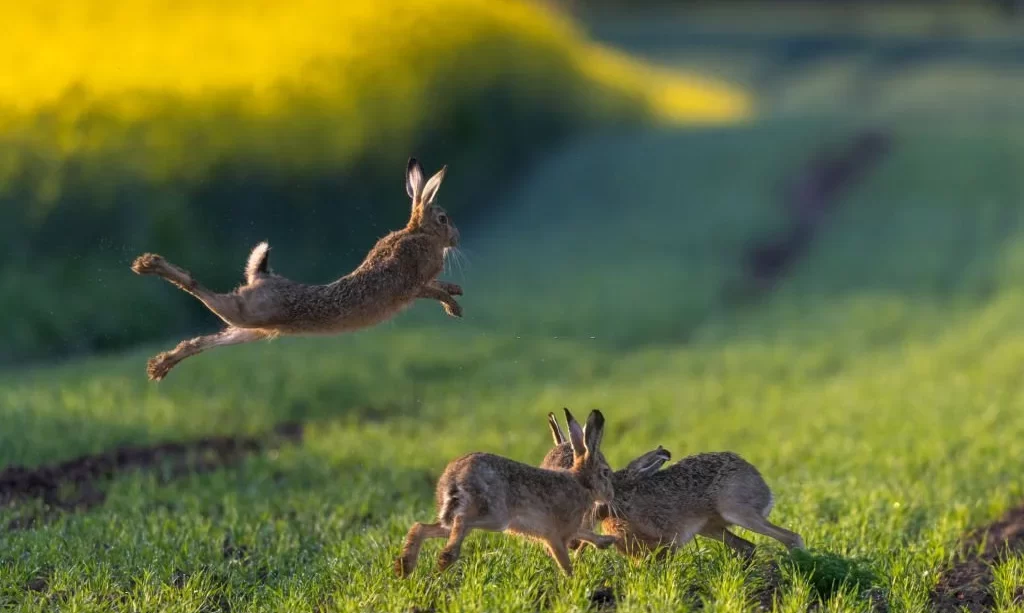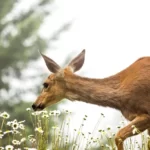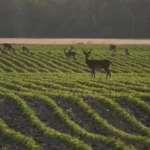Rabbits, those endearing and nimble creatures, have captivated the hearts of many with their cute appearance and their remarkable leaping abilities. These small mammals are known for their propensity to hop and jump, making them a delightful and captivating presence in both the wild and as beloved pets. But just how high can rabbits jump? This question has intrigued enthusiasts and animal lovers for generations, prompting us to dive into the world of these remarkable leapers.
Rabbits are often celebrated for their agility and grace, whether they’re frolicking in meadows, navigating their surroundings with precision, or showcasing their jumping prowess. In this article, we embark on a journey to explore the heights that rabbits can reach when they leap, the adaptations that make their jumps possible, and the significance of their jumping abilities in both the wild and domestic settings. So, let’s hop right in and uncover the secrets behind the impressive leaps of our furry friends.
Rabbit Anatomy and Adaptations
Understanding the heights that rabbits can achieve when they jump begins with a closer look at their anatomy and the unique adaptations that equip them for these acrobatic feats.
- Strong Hind Legs: One of the defining features of rabbits is their powerful hind legs. These legs are muscular and designed for propelling the rabbit into the air. They are crucial for generating the force needed to jump to impressive heights.
- Flexible Spine: Rabbits have a flexible spine that allows them to arch their backs and extend their legs fully when leaping. This flexibility contributes to their ability to clear obstacles and reach substantial heights.
- Unique Muscular Structure: The muscles in a rabbit’s legs are well-developed and responsive, enabling rapid and forceful contractions when they jump. These muscles provide the necessary propulsion for their leaps.
- Lightweight Body: Rabbits have relatively lightweight bodies, which aids in achieving the necessary lift during jumps. Their body composition allows for efficient and agile movements in the air.
These anatomical adaptations, along with their innate agility and coordination, enable rabbits to excel in jumping and hopping activities. Their unique combination of strength, flexibility, and muscle coordination makes them true athletes of the animal kingdom, capable of achieving impressive heights when leaping. In the sections that follow, we will delve deeper into the mechanics of rabbit jumps and explore the factors that influence their jumping abilities.
The Impressive Rabbit Leap
Rabbits, with their innate athleticism and powerful hind legs, are known for their impressive leaps. These jumps can vary in height and are often influenced by factors such as the rabbit’s age, breed, and motivation. While domestic rabbits may engage in jumping activities that align with playfulness or curiosity, wild rabbits showcase their leaping abilities for survival and adaptation to their natural environments.
In the wild, rabbits can clear obstacles like bushes and logs with ease, demonstrating their agility and ability to evade predators. Some rabbit species are also capable of making long leaps across fields, displaying a combination of speed and jumping prowess.
Domestic rabbits, on the other hand, may engage in jumping for playful reasons or to explore their surroundings. Some rabbit owners even train their pets for rabbit jumping competitions, where these furry athletes showcase their abilities by jumping over hurdles.
Rabbit Jumping Mechanics
The mechanics behind rabbit jumps are a fascinating display of biomechanical precision. When a rabbit prepares to jump, several key actions take place:
- Crouch and Preparation: The rabbit crouches down, flexing its powerful hind leg muscles and storing potential energy. This crouched position allows for maximum force generation.
- Propulsion: With a burst of muscular power, the rabbit pushes off the ground, extending its hind legs fully. The hind leg muscles contract rapidly, generating the necessary force for the jump.
- Landing: In mid-air, the rabbit stretches out its legs, creating a streamlined posture. This posture minimizes air resistance and optimizes the jump’s efficiency.
- Precision and Control: Rabbits have an incredible ability to control the direction and distance of their jumps. This adaptability allows them to navigate their environment with precision, whether it’s in the wild or during playtime in a home setting.
The combination of these actions, along with their physical adaptations, allows rabbits to perform graceful and powerful jumps. Whether it’s clearing obstacles in their natural habitats or delighting their human companions with their agility, rabbits’ jumping mechanics are a testament to their remarkable athleticism.
Factors Influencing Rabbit Jumping
Several factors can influence a rabbit’s jumping performance:
- Age: Younger rabbits tend to be more active and enthusiastic jumpers, while older rabbits may jump less frequently due to age-related changes in muscle tone and flexibility.
- Breed: Different rabbit breeds may have variations in their jumping abilities. Some breeds are known for their athleticism and agility, while others may have physical characteristics that affect their jumping prowess.
- Motivation: Rabbits are more likely to jump when motivated by play, exploration, or social interaction. Providing stimulating environments and companionship can encourage jumping behavior.
- Health: A rabbit’s overall health can impact its jumping abilities. Health issues or discomfort may reduce a rabbit’s inclination to jump.
By considering these factors, rabbit owners and enthusiasts can better understand and encourage their pets’ jumping activities. Additionally, recognizing the importance of jumping for wild rabbits sheds light on their survival strategies in the natural world.
In the following section, we will explore the role of rabbit jumps in survival and behavior, both in the wild and in domestic settings.
The Role of Rabbit Jumps in Survival and Behavior
In both wild and domestic settings, rabbit jumps play a significant role in the life of these small mammals. Understanding this role offers insights into their survival strategies and behaviors.
Wild Rabbits: For rabbits in the wild, jumping serves multiple crucial purposes. First and foremost, it’s a means of escape from predators. Rabbits are vulnerable prey animals, and their incredible jumping abilities allow them to quickly evade threats by leaping over obstacles and zigzagging through dense vegetation. This agility is an essential part of their survival toolkit.
Jumping also aids wild rabbits in finding food. They can reach vegetation that would be inaccessible to ground-dwelling animals, expanding their dietary options. Additionally, jumping can facilitate communication between rabbits in the wild, serving as a way to signal danger or establish dominance within their social groups.
Domestic Rabbits
Domestic rabbits, while not facing the same survival challenges as their wild counterparts, often exhibit jumping behavior as well. This behavior can be attributed to curiosity, playfulness, and their natural instincts. Rabbits in home environments may engage in jumping as a form of exploration or to interact with their human companions.
Many rabbit owners also introduce their pets to rabbit jumping competitions or agility training, providing mental and physical stimulation. These activities mimic the natural behaviors of wild rabbits and help keep domestic rabbits healthy and happy.
Conclusion
Rabbits, with their impressive jumping abilities, have carved out a unique place in the animal kingdom. Whether in the wild, where leaps are a matter of life and death, or in domestic settings, where jumps express their playful and curious nature, rabbits’ jumping prowess is a testament to their adaptability and athleticism.
By exploring the mechanics and factors influencing rabbit jumps, we gain a deeper appreciation for these delightful creatures. For those who share their lives with pet rabbits, understanding and encouraging jumping behavior can provide enrichment and foster a strong bond. For wildlife enthusiasts, recognizing the significance of jumps in the wild adds to our understanding of rabbits’ remarkable adaptations.
In the end, whether leaping over obstacles in the wild or hopping for joy in a cozy living room, rabbits’ jumping abilities continue to captivate and charm those fortunate enough to witness their graceful and agile movements.



